While the flights of fancy that drive many of the concepts of vertical farming are quite breathtaking, there’s a subset of these projects that, while not quite ready for the pages of design magazines, have much more applicability for building-integrated agriculture in new construction and retrofits. A simple and much discussed example that has been around for years is the rooftop greenhouses on Eli Zabar’s Vinegar Factory in Manhattan (dare I say one place where vertical solutions may be appropriate due to density).
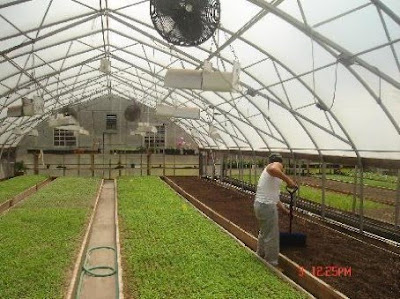
:: images via The Hanging Gardens of Babylon
Picking up on this trend is are a range of greenhouses for growing veggies in soil as well as expanded concepts including hydroponics aquaculture. A post in City Farmer mentions the work of Cityscape Farms, which offers solutions for urban farming using integrated food as waste from these combined systems.

:: image via City Farmer
Another project that is tying the ground-based agriculture with rooftop solutions comes from the Badger School for Urban Agriculture and Community in Madison, Wisconsin, with the Center for Resilient Cities and Milwaukee-based Will Allen’s Growing Power as leaders of the effort.
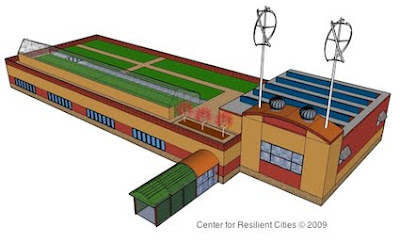
:: image via City Farmer
While I’m always a bit dubious of ‘first of’ claims – this South Bronx affordable housing complex aimed a combating food insecurity with rooftop farms and greenhouses (from Brightfarm Systems): “…will be able to supply enough produce to meet the annual fresh vegetable needs of up to 450 people. Like many inner city, low income communities, the South Bronx suffers from food deserts, where residents lack access to fresh vegetables at affordable prices.”
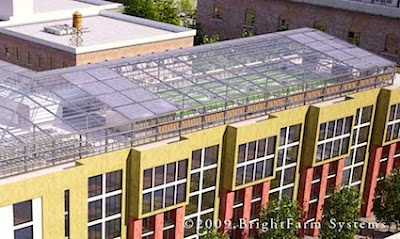
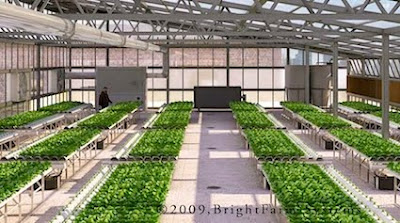
:: images via City Farmer
Still more modest interventions include creating space atop – which tend towards the augmentation of rooftop gardens by implementation of cold-frames or vertical elements. These range from the modest fire-escape planters and balcony growing to rooftop structures to provide additional growing season (at a much smaller cost than greenhouses). An example from the Bastille Restaurant in shows this hybrid.
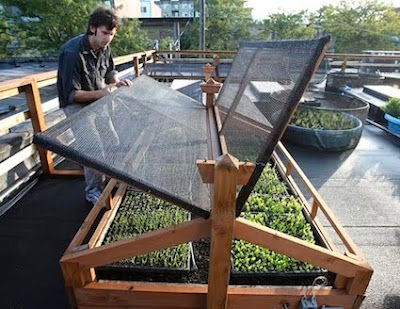
:: image via City Farmer
The concept of mobility is always an issue – so another small-scale garden greenhouse starts to attach to vehicles – such as this mobile greenhouse spotted in Brooklyn. A bit silly and obviously not a solution, but a visible example to create awareness of food production in urban areas – and more accessible than rooftops and distant farms.

:: image via Urban Greenery
One of the most enlightened proposals I’ve seen is the modular system from Casa HuertaTreehugger: featuring a series of vertical greening components for maximizing food production in high density slums. Via “A group of architects from Argentina have come up with a project called Orchard House, which proposes the implementation of vertical gardens in shanty towns to provide local people with food and improve the visuals of these villages.”
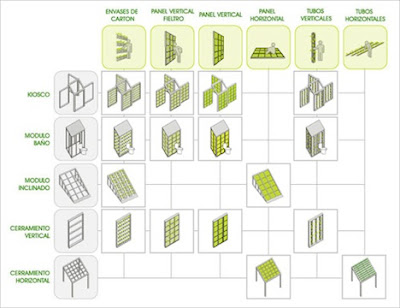
:: images via Treehugger
The social component of this is just as important as the scale. As Despommier mentions in this Discovery News video – the optimum size to feed 50,000 people with a vertical farm is 30 stories of a 5 acre lot. While potentially viable, how transferrable is this to common use and how many people will be employed in these endeavors? Also, will this be another elitist addition to cities for the haves – while paying lip service to less fortunate people and areas much more significant food insecurity. Would we be better served with a more decentralized and multi-pronged (even if still vertical) approach using walls and other elements woven within the fabric of our urban areas.
The scale is a big issue – and is at the heart of any agricultural endeavor. Our evolution from home gardens and shared community gardens to feed ourselves to more large-scale methods of agribusiness increased our ability to produce food manifold. It also made our agriculture more polluting, significantly increased transportation costs, and depleted the workforce for farm-based areas through the use of mechanization. This is what we subsidize on an annual basis – not the most productive form of food production.
This begs the question – are we interested in feeding ourselves (or the world) or are we also creating jobs and skills for folks to feed themselves and doing so in a way that is equitable and socially responsible? While nay-sayers may disregard the role of urban farming as impractical to feed urban areas, I say the role is of vital importance. As more people move to cities it will become more and more important to offer productive green jobs to city-dwellers. Agriculture used to be a major employment driver that slowly gave way to industry, manufacturing, commercial, service and white-collar economies – an economic heritage in which we are all suffering and ‘waiting’ for things to get better. If we could find ways to increase the skills and direct the energy of 10% plus unemployment on feeding ourselves – we would have better food and a more robust and healthy economy and workforce.
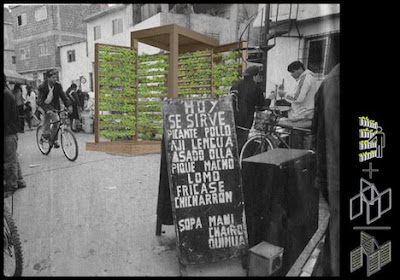
:: image via Treehugger
This is why I like the proposal from Argentina so much – as it’s simple, modest, and imminently scalable (but also innovative) to any area of any size. More from Treehugger: “The idea is to build some of these houses inside shanty towns in Buenos Aires, Argentina, with the help of organizations and private companies, and then teach the system to local people for them to be able to put together structures on their own. By doing that, the project seeks to generate cooperative work that creates jobs and production in shanty towns.”

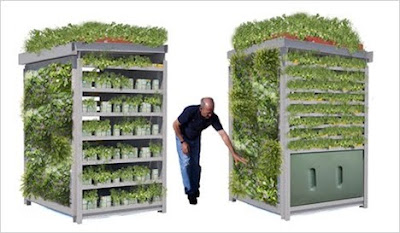
The proposals may be modest but they seem practical and easy to implement. I like the rooftop cold frames.
I wonder if institutions with lawns would lease these them to be used for cold frame agriculture (see http://localecologist.blogspot.com/2009/09/what-happened-to-grow-cook-eat-learn.html).